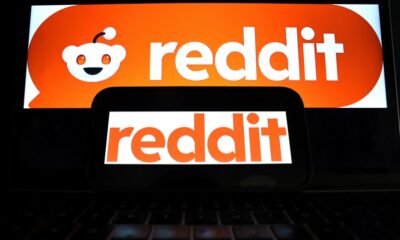SOCIAL
Twitter Launches Public Test of ‘Circles’ for Private Chats via Tweet
After testing out a range of variations of the option over the past year, Twitter has today launched a public test of its new ‘Twitter Circle’ option, which will enable users to share tweets with a specific, custom group of connections in the app.
Some Tweets are for everyone & others are just for people you’ve picked.
We’re now testing Twitter Circle, which lets you add up to 150 people who can see your Tweets when you want to share with a smaller crowd.
Some of you can create your own Twitter Circle beginning today! pic.twitter.com/nLaTG8qctp
— Twitter Safety (@TwitterSafety) May 3, 2022
As you can see in this example, Twitter Circle enables users to essentially create a private group chat via tweet, with a variable audience control process that enables you to share tweets with a specific group of chosen contacts.
Users will be able to add up to 150 people to their Circle, with any tweets in the group then only visible to the people in that listing.
Members of Circle are alerted that their tweets are only viewable by those in the group via green indicator attached to each Circle tweet.
The option is essentially an extension of Twitter’s reply control option which it launched back in 2020, which enables users to decide who can see and respond to each of their tweets, while it also leans into the more enclosed discussion use case that Twitter’s looking to boost with its Communities option.

Communities enables users to segment their Twitter audience, so that you can share more specific discussions with specific groups, as opposed to broadcasting everything to all of your followers all the time, and that, ideally, will open up more opportunity for Twitter users to engage with a broader range of topics, as they won’t feel constrained to post only what they think their established audience will respond to and like.
But whether it works that way in practice remains to be seen. Part of the problem with Circles, as I see it at least, is that most users likely conduct the discussions that would fit into this offering within their DMs already, maintaining group chats with their close friends in a more private space. That privacy enables people to feel more comfortable sharing, and there doesn’t seem like much reason for them to switch those conversations to the potentially more exposed Circles option instead.
In addition to this, Twitter users also have lists to stay in touch with their most important connections, or they can just whittle their Following list down to the most important profiles – so there’s no real, practical value or need for Circles, as such, given that all of the functionality for it already exists in different forms.
A more practical, and valuable application of the same core concept would by Twitter’s other in-development restricted sharing option ‘Facets’, which would enable users to follow each profile based on different topic interests.

As you can see in this example, Facets would enable users to follow each profile based on different topics, so if you want to tweet about entirely different subjects, and not annoy your main profile followers with things that are irrelevant to them, you could give users the option to follow specific elements of your Twitter presence, as opposed to getting all of your tweets.
That, of course, is not the same as more enclosed group sharing, but it caters to a similar need, in segmenting your audience, which would have, arguably, a more practical value and purpose than trying to bring group chats into the general tweet stream.
As noted, Twitter first previewed Circles in July last year, and within that first explanation, Twitter also noted that Circles tweets would appear first in user timelines, which would be an even more significant element, and could see increased interest in the option.
That’s not part of this initial test launch of the option, though it could be built into Twitter’s algorithm – and maybe, if Circles tweets had the extra benefit of increased priority for those in the group, that could make it a more enticing function.
But right now, I’m not sure I see the real value – though no doubt many people will test it, and they might well find handy use cases for the process.
But it does also seem like interesting timing.
Twitter has long been viewed by many as a ‘global town square’, where people can go to get the latest news and updates, and where everyone can have their say.
That analogy was most recently used by incoming Twitter owner Elon Musk.
Given that Twitter serves as the de facto public town square, failing to adhere to free speech principles fundamentally undermines democracy.
What should be done? https://t.co/aPS9ycji37
— Elon Musk (@elonmusk) March 26, 2022
Yet, Twitter itself seems determined to partition off the Twittersphere where it can, with variable controls for who can see your tweets, who can reply, Super Follower tweets for only those who’ve paid to see them, private Spaces, private chats, etc.
Is that in line with Elon’s vision for the app?
Is that why Twitter has pushed this out now, before the takeover goes through?
In essence, I don’t see big value in segmenting Twitter discussions, when DMs already exist, but maybe there are ways to use it to highlight your biggest fans, and create more intimate connection, or to segment your audience into specific groups, similar to what ‘Facets’ might do anyway.
SOCIAL
Snapchat Explores New Messaging Retention Feature: A Game-Changer or Risky Move?

In a recent announcement, Snapchat revealed a groundbreaking update that challenges its traditional design ethos. The platform is experimenting with an option that allows users to defy the 24-hour auto-delete rule, a feature synonymous with Snapchat’s ephemeral messaging model.
The proposed change aims to introduce a “Never delete” option in messaging retention settings, aligning Snapchat more closely with conventional messaging apps. While this move may blur Snapchat’s distinctive selling point, Snap appears convinced of its necessity.
According to Snap, the decision stems from user feedback and a commitment to innovation based on user needs. The company aims to provide greater flexibility and control over conversations, catering to the preferences of its community.
Currently undergoing trials in select markets, the new feature empowers users to adjust retention settings on a conversation-by-conversation basis. Flexibility remains paramount, with participants able to modify settings within chats and receive in-chat notifications to ensure transparency.
Snapchat underscores that the default auto-delete feature will persist, reinforcing its design philosophy centered on ephemerality. However, with the app gaining traction as a primary messaging platform, the option offers users a means to preserve longer chat histories.
The update marks a pivotal moment for Snapchat, renowned for its disappearing message premise, especially popular among younger demographics. Retaining this focus has been pivotal to Snapchat’s identity, but the shift suggests a broader strategy aimed at diversifying its user base.
This strategy may appeal particularly to older demographics, potentially extending Snapchat’s relevance as users age. By emulating features of conventional messaging platforms, Snapchat seeks to enhance its appeal and broaden its reach.
Yet, the introduction of message retention poses questions about Snapchat’s uniqueness. While addressing user demands, the risk of diluting Snapchat’s distinctiveness looms large.
As Snapchat ventures into uncharted territory, the outcome of this experiment remains uncertain. Will message retention propel Snapchat to new heights, or will it compromise the platform’s uniqueness?
Only time will tell.
SOCIAL
Catering to specific audience boosts your business, says accountant turned coach

While it is tempting to try to appeal to a broad audience, the founder of alcohol-free coaching service Just the Tonic, Sandra Parker, believes the best thing you can do for your business is focus on your niche. Here’s how she did just that.
When running a business, reaching out to as many clients as possible can be tempting. But it also risks making your marketing “too generic,” warns Sandra Parker, the founder of Just The Tonic Coaching.
“From the very start of my business, I knew exactly who I could help and who I couldn’t,” Parker told My Biggest Lessons.
Parker struggled with alcohol dependence as a young professional. Today, her business targets high-achieving individuals who face challenges similar to those she had early in her career.
“I understand their frustrations, I understand their fears, and I understand their coping mechanisms and the stories they’re telling themselves,” Parker said. “Because of that, I’m able to market very effectively, to speak in a language that they understand, and am able to reach them.”Â
“I believe that it’s really important that you know exactly who your customer or your client is, and you target them, and you resist the temptation to make your marketing too generic to try and reach everyone,” she explained.
“If you speak specifically to your target clients, you will reach them, and I believe that’s the way that you’re going to be more successful.
Watch the video for more of Sandra Parker’s biggest lessons.
SOCIAL
Instagram Tests Live-Stream Games to Enhance Engagement

Instagram’s testing out some new options to help spice up your live-streams in the app, with some live broadcasters now able to select a game that they can play with viewers in-stream.
As you can see in these example screens, posted by Ahmed Ghanem, some creators now have the option to play either “This or That”, a question and answer prompt that you can share with your viewers, or “Trivia”, to generate more engagement within your IG live-streams.
That could be a simple way to spark more conversation and interaction, which could then lead into further engagement opportunities from your live audience.
Meta’s been exploring more ways to make live-streaming a bigger consideration for IG creators, with a view to live-streams potentially catching on with more users.
That includes the gradual expansion of its “Stars” live-stream donation program, giving more creators in more regions a means to accept donations from live-stream viewers, while back in December, Instagram also added some new options to make it easier to go live using third-party tools via desktop PCs.
Live streaming has been a major shift in China, where shopping live-streams, in particular, have led to massive opportunities for streaming platforms. They haven’t caught on in the same way in Western regions, but as TikTok and YouTube look to push live-stream adoption, there is still a chance that they will become a much bigger element in future.
Which is why IG is also trying to stay in touch, and add more ways for its creators to engage via streams. Live-stream games is another element within this, which could make this a better community-building, and potentially sales-driving option.
We’ve asked Instagram for more information on this test, and we’ll update this post if/when we hear back.
-

 MARKETING6 days ago
MARKETING6 days agoRoundel Media Studio: What to Expect From Target’s New Self-Service Platform
-

 SEO6 days ago
SEO6 days agoGoogle Limits News Links In California Over Proposed ‘Link Tax’ Law
-
SEARCHENGINES6 days ago
Daily Search Forum Recap: April 12, 2024
-

 SEO5 days ago
SEO5 days ago10 Paid Search & PPC Planning Best Practices
-

 SEARCHENGINES5 days ago
SEARCHENGINES5 days agoGoogle Core Update Volatility, Helpful Content Update Gone, Dangerous Google Search Results & Google Ads Confusion
-

 SEO7 days ago
SEO7 days agoGoogle Unplugs “Notes on Search” Experiment
-

 MARKETING6 days ago
MARKETING6 days ago2 Ways to Take Back the Power in Your Business: Part 2
-

 MARKETING4 days ago
MARKETING4 days ago5 Psychological Tactics to Write Better Emails















You must be logged in to post a comment Login